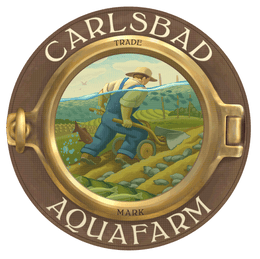· By Carlsbad Aquafarm
The Life Cycle of a Pacific Oyster
Introduction:
The Pacific oyster, scientifically known as Crassostrea gigas, is a species that holds great ecological and culinary importance. Its life cycle is a fascinating process that showcases the resilience and adaptability of these bivalve creatures. Join us as we explore the stages of the Pacific oyster's life, from its early beginnings to maturity.
Larval Stage:
The life of a Pacific oyster starts when adult oysters release millions of eggs and sperm into the water during spawning. Once fertilized, the eggs develop into free-swimming larvae called "veligers." These tiny larvae drift in the water, feeding on plankton and gradually growing in size. The veligers are equipped with a small shell and tiny hairs called cilia, which aid in their movement and filter-feeding process.
Settlement and Metamorphosis:
After several weeks, the veligers undergo metamorphosis, transforming into spat. At this stage, they develop a more substantial shell and seek suitable substrates to settle and attach. Pacific oysters are known to prefer hard surfaces such as rocks, shells, or other oyster shells. They cement themselves firmly, using byssal threads to anchor their growing bodies.
Growth and Maturation:
As the spat settle and attach, they embark on a remarkable growth journey. Pacific oysters have a rapid growth rate, especially during their first few years. They feed by filtering water, extracting nutrients and microscopic particles to fuel their development. Over time, the oysters continue to grow, building layer upon layer of their hard shell. It can take around two to five years for Pacific oysters to reach marketable size, depending on environmental conditions and farming practices.
Reproduction and Life Cycle Continuation:
When the Pacific oysters reach sexual maturity, typically around two to three years of age, they are capable of reproducing. During spawning events, adult oysters release eggs and sperm into the water. Fertilization occurs, resulting in the development of new larvae, thus continuing the life cycle.
Conclusion:
The life cycle of a Pacific oyster is a testament to the resilience and adaptability of these remarkable bivalves. From their early stages as veligers to settling, growing, and reaching sexual maturity, Pacific oysters play a vital role in marine ecosystems and provide a delectable culinary delight for seafood enthusiasts. Understanding their life cycle allows us to appreciate their ecological importance and the efforts to sustainably cultivate these fascinating creatures.

